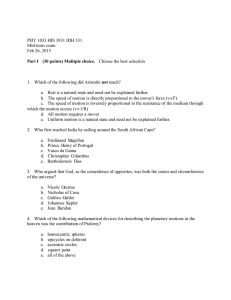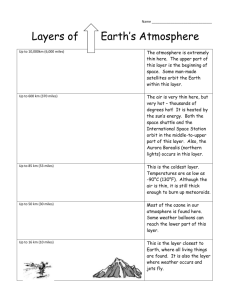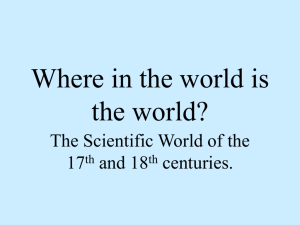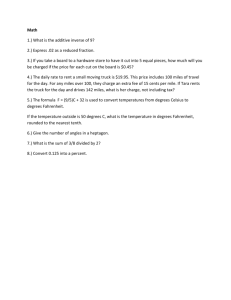PHY 1033 HIS 3931 IDH 331 Mid-term exam Feb 26, 2015
advertisement
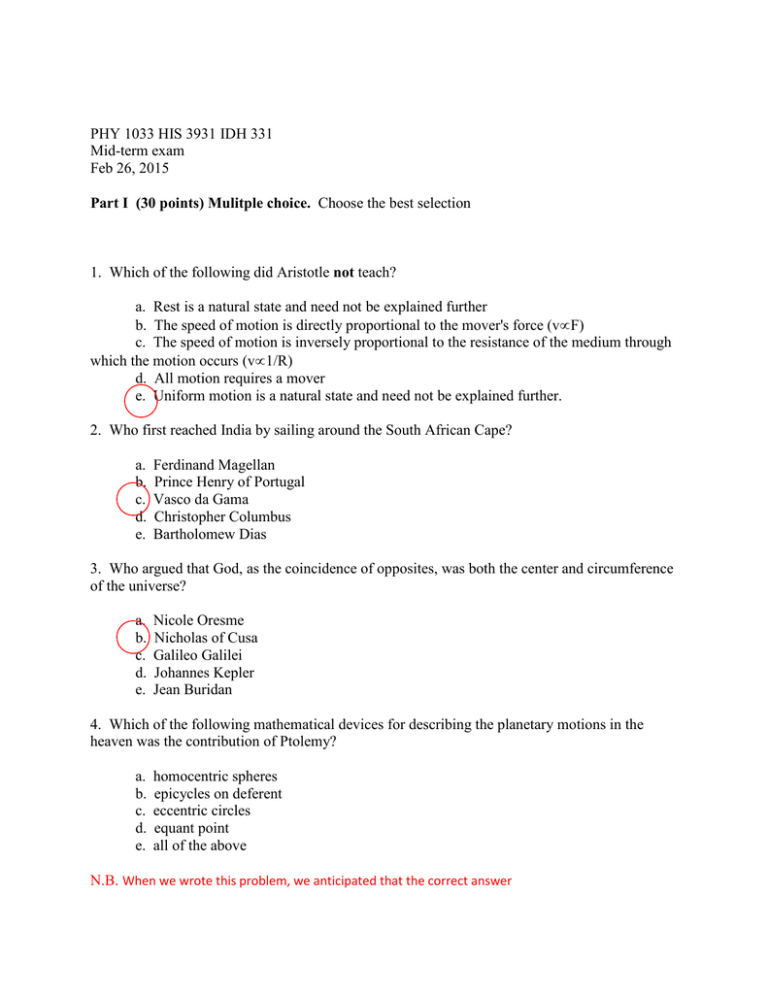
PHY 1033 HIS 3931 IDH 331 Mid-term exam Feb 26, 2015 Part I (30 points) Mulitple choice. Choose the best selection 1. Which of the following did Aristotle not teach? a. Rest is a natural state and need not be explained further b. The speed of motion is directly proportional to the mover's force (v∝F) c. The speed of motion is inversely proportional to the resistance of the medium through which the motion occurs (v∝1/R) d. All motion requires a mover e. Uniform motion is a natural state and need not be explained further. 2. Who first reached India by sailing around the South African Cape? a. b. c. d. e. Ferdinand Magellan Prince Henry of Portugal Vasco da Gama Christopher Columbus Bartholomew Dias 3. Who argued that God, as the coincidence of opposites, was both the center and circumference of the universe? a. b. c. d. e. Nicole Oresme Nicholas of Cusa Galileo Galilei Johannes Kepler Jean Buridan 4. Which of the following mathematical devices for describing the planetary motions in the heaven was the contribution of Ptolemy? a. b. c. d. e. homocentric spheres epicycles on deferent eccentric circles equant point all of the above N.B. When we wrote this problem, we anticipated that the correct answer would be c) equant point. This is because, while Ptolemy also used a, b and e in his system, they had been in use previously by other philosophers/astronomers. It appears that many of you didn’t understand the use of the word “contribution” here, so we counted “all of the above” as correct as well 5. Which of the following Aristotelian elements can be found in the heavens? a. b. c. d. e. water fire air quintessence (also called aether) all of them 6. Kepler is known for producing a watershed moment in the history of physics. What was it? a. He discredited Copernicus’s system by proving Tycho correct b. He successfully dismantled the Aristotelian understanding of motion . c. He brought considerations of force into astronomy as the cause of planetary motions d. His 5-solid theory accurately accounted for the individual sizes of planetary orbits e. He showed that the period of a planet was proportional to the square of its distance from the sun (T∝R2) 7. The comet of 1577 allowed Tycho to infer that a. b. c. d. e. comets had elliptical orbits there cannot be actual crystalline spheres carrying planets in their orbits Aristotle's theory of comets was correct comets are warnings of calamitous events none of the above 8. Galileo mistakenly thought he had empirical evidence that the earth moved. On what was it based? a. His telescopic observations b. His theory of tides c. His theory of circular inertial motion d. His theory of sunspots e. His theory of floating bodies 9. Which of the following telescopic observations by Galileo showed that Ptolemy's system could not be correct? a. b. c. d. e. The Milky Way Phases of Venus Mountains on the Moon Satellites of Jupiter None of them 10. All of the following entertained before Copernicus the possibility that the earth moved EXCEPT: a. Aristarchus b. Ptolemy c. Nicole Oresme d. Jean Buridan e. Martin Luther Part II (40 points) Short answer questions. Answer the following a briefly as possible. You should not need more than one or two sentences and/or a small sketch, as appropriate. 1. Global wandering. A man hikes 50 miles south, 50 miles west, 50 miles north, and finds he is back where he started. He sees a bear. What color is it? Explain. The only place on the earth where you can go south, west, and north and arrive back at the same location is the north pole, and the only kind of bear that lives there is a polar bear, which is white. 2. Navigation. On a clear night, a sailor measures the angle Polaris, the north star, makes with the horizon, finding 32 degrees. What is the latitude of her ship? As we showed on the homework, the latitude (in the northern hemisphere) is equal to the angle Polaris makes with the horizon. 3. Average velocity. On I-75 heading northwest, your pickup travels 20 mi at 40 mi/h, at which point you run out of fuel. You walk 1 mi farther, to the nearest gas station, in 30 min. What is your average velocity, in mi/hr? Show your work. Use ∆x=v∆t. On the first part of the trip, it took ∆t=∆x/v =20/40=1/2 h. On the 2nd part, it took 30 min = ½ hr. So total distance ∆x=20mi+1mi =21mi. Total time = 1/2h+1/2h = 1h. So the average speed is vavg=∆x/∆t=21mi/h. 4. Name 2 of the 4 motions of the earth identified by Copernicus. 4 motions were: revolution, rotation, precession of the equinoxes and the weird rotationof the earth’s axis in order to keep the axis pointing always in essentially the same direction during one revolution. 5. Explain why, according to current understanding, the lengths of the seasons (time between equinox and solstice) are not quite equal. The seasons would all be equal if the Earth’s orbit were circular. Because (as Kepler showed), the orbit is elliptical with the Sun at one focus, the Earth spends (northern hemisphere) winter closer to the sun, during which it is moving faster, so season is shorter than summer, when it is far away and moving more slowly. 6. How long does it take the sun to complete one trip through the zodiac? 1 year. See homework 2. 7. Acceleration. If a rocket initially at rest accelerates at a constant rate of 50 m/s2 for one minute, what is its final speed, in m/s? Show your work. ∆v=a∆t = (50 m/s2)(60 s) = 3000 m/s. 8. Centripetal acceleration. Assume Mercury has a circular orbit around the sun, with radius 37 million miles. It takes 3 months for Mercury to complete one orbit. What is its centripetal acceleration? Show your work. We need the speed around the orbit, which is the distance traveled in one revolution divided by the time for 1 revolution. The circumference of the circular orbit is v = (2πR/T) = 232 million miles/3 months =77 million miles/month Centripetal a = v2/R = (77 million miles/month)2/37 million miles = 160 million miles/month2, Which works out to about 0.04 m/s2. Part III. (30 pts) Essay. Choose either A or B (Do not do both). Write in blue book. A. Summarize what Aristotle had to say about the motion of objects, how his medieval followers adjusted Aristotle's ideas, and how Galileo's explanation of motion differed from both Aristotle and his medieval followers. B. In what ways was Copernicus the last of the ancient astronomers and in what ways was he the first of the moderns? Which, in your view, is the stronger case?
